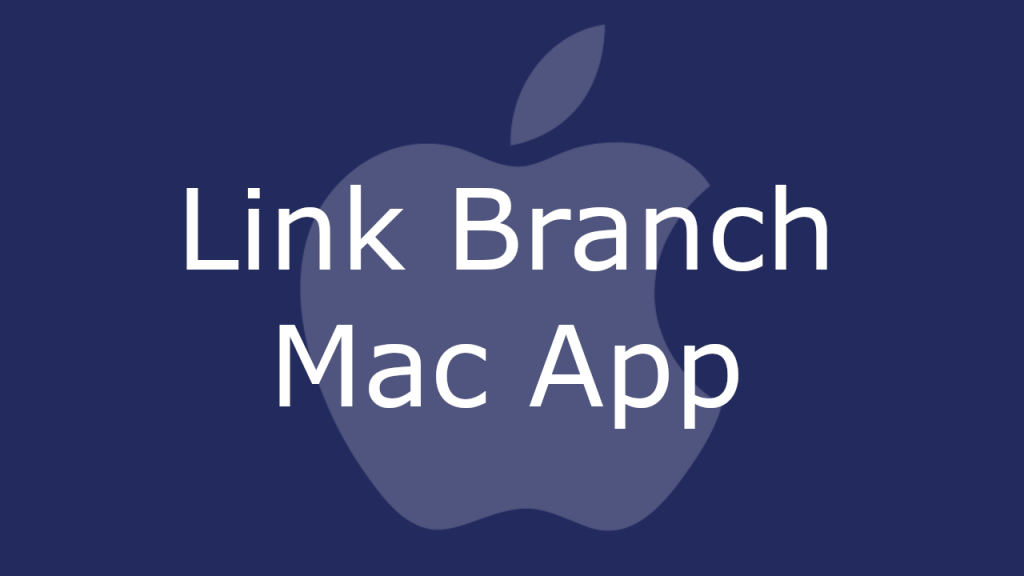Link Branch
Link Branch is a rogue program that targets Mac computers and seeks to change their default search engine and/or homepage settings. Link Branch typically redirects users to different websites and exposes them to sponsored pop-up ads, banners and notifications.

The unnecessary redirects of this program seem to cause a lot of frustration to the web users who end up with Link Branch on their Mac. Moreover, a lot of people are concerned that these redirects may lead them to dangerous websites. That’s why in this post we will explain to our readers how to effectively uninstall this program and remove the nagging changes that it has imposed on their Safari, Chrome, Firefox, or any other Mac-compatible web browser.
Link Branch for Mac
Link Branch for Mac is a browser hijacking program that can trigger auto-redirects to sponsored web locations without being authorized to do so. Link Branch for Mac is not a Trojan virus or a Ransomware infection but its activity can be highly annoying.
Your Mac can be as good as new once you successfully uninstall Link Branch from it. However, this task may be quite time consuming because a browser hijacker like this one can reinstall itself again and again if its supporting components are not removed from the system effectively. Fortunately, this article contains everything you need to get rid of Link Branch. What is important to remember is that you don’t need to worry, because this program is not a malicious virus, such as ransomware or a Trojan that can destroy the machine. Just follow the guide at the end of this page and you should be fine. Of course, if you’re unfamiliar with the steps in it, you can always use a professional removal tool such as the one included in the guide if you want to delete the hijacker quickly.
What is LinkBranch?
LinkBranch is a potentially unwanted browser hijacking application that seeks to take over popular Mac browsers and to redirect their traffic. LinkBranch doesn’t ask for permission to modify the homepage or replace the default search engine and typically installs some sponsored components in their place.
If you have Link Branch, QSearch or Search Baron on your computer, you may constantly see different types of pop-ups, text ads, box messages, banners and similar promotional message on the screen of your main web browser. In addition to that, you may star to experience automatic redirects to specific websites that partner with the intrusive browser hijacking program. None of these activities are fatal for your computer but it may become very annoying in the long run.
The Link Branch Virus
The Link Branch Virus is a Mac browser application that attaches itself to browsers such as Safari and Chrome in order to force them to display sponsored ads. The Link Branch Virus seeks to land users on pre-defined web locations and paid ads in order to generate pay-per-click profits for its developers.
When you deal with such software, one important thing to keep in mind is that it generally is a very bad idea to interact with any of the displayed notifications and links. The reason is you can never be sure where these links and ads may redirect you and the risk of landing on something malicious always exists. This is why a good way to avoid the risks related to random web ads is to get rid of them and the program that generates them as quickly as possible.
SUMMARY:
| Name | Link Branch |
| Type | Browser Hijacker |
| Detection Tool |
Link Branch Removal from Mac
You are dealing with a malware infection that can restore itself unless you remove its core files. We are sending you to another page with a removal guide that gets regularly updated. It covers in-depth instructions on how to:
1. Locate and scan malicious processes in your task manager.
2. Identify in your Control panel any programs installed with the malware, and how to remove them. Search Marquis is a high-profile hijacker that gets installed with a lot of malware.
3. How to clean up and reset your browser to its original settings without the malware returning.
You can find the removal guide here.
For mobile devices refer to these guides instead: Android , iPhone

Leave a Reply